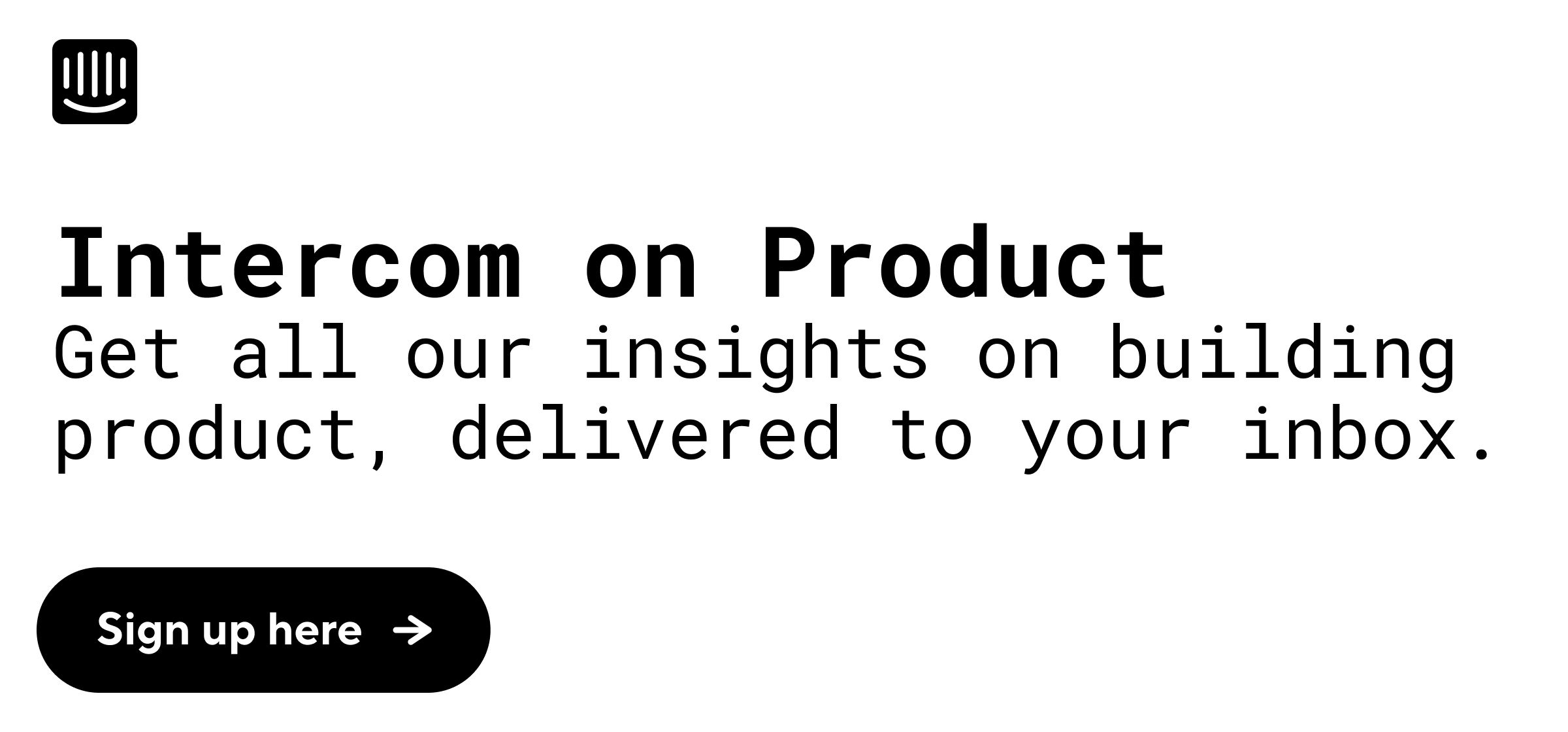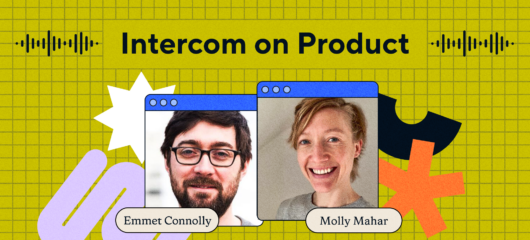
B2B vs B2C product management: How different are they really?
The art of product management involves a lot of nuance – the role can look very different from company to company, never mind industry to industry.
A recurring question in the discipline revolves around the differences between B2B and B2C product management – after all, the problems faced by individual users are usually not very similar to the problems faced by businesses.
I’ve been thinking about this topic a lot since I started at Intercom – I had previously spent my entire product management career in the B2C space, so I’ve been learning all about the similarities and differences firsthand.
In thinking about this question, I’ve found the R&D principles we use here at Intercom to be a really useful prism for understanding the differences and similarities.

The high-level product principles are:
- Start with the problem
- Think big, start small, learn fast
- Ship fast, ship early, ship often
- Deliver outcomes
So how do these principles apply in the differing environments of B2B and B2C?
Principle 1: Start with the problem
In any PM role, across any industry, it’s fair to say that “Starting with the problem” isn’t a controversial principle. Every good product manager should be focused around the problem they’re solving, but there is a difference I’ve noticed in really getting into the granularity of the problem in a B2B environment. In the B2B space, you don’t just have to consider the customer problem, but also the end-user of your product (i.e. your customer’s customer).
“Every problem you’re looking to solve comes with a vast amount of sub-problems to explore”
Add working on a SaaS product on top of that, and you’ve got some really huge complexity in your product and problem statements you need to consider. It’s almost certain that every problem you’re looking to solve comes with a vast amount of sub-problems to explore, and each product or feature you’re building will have numerous use cases and edge cases to consider. I’ve found myself spending much more time in the problem statement phase, pushing myself to ‘go deep’ and get to a place where I’m really clear on the problems to solve, who to solve for, and just as importantly, outlining what we’re not going to solve.
Principle 2: Think big, start small, learn fast
Part of this principle is all about, you guessed it, “thinking big” and exploring a broad range of ways to solve a problem, forcing yourself to stop going directly down the solution approach that perhaps you already had in mind. Once the solution direction is defined, then think about the smallest solution that can solve the customer problem, and scoping here should hurt. Generally, I think this part of the principle is pretty consistent across B2B and B2C, but there are definitely some differences when considering the latter part of the principle: ‘learn fast’. This is absolutely important across all forms of product development, but the ways in which we can learn in B2B vs. B2C can be quite different.
“B2B product management has much more focus on running betas to validate products and features”
B2C product managers are, often, blessed with access to a vast amount of quantitative data, with millions of customers using the product. You’re able to regularly leverage experiment types such as fake door testing, to learn if customers are even going to use a feature before having to build anything. The access to this data is also instrumental in learning if your solution solved the problem through A/B testing, or validating which solution is the correct one through multi-variant (MVT) testing.
In a B2B environment, a lot of the time, you simply won’t have the sample size to be able to effectively run these types of experiments. This of course isn’t always the case, and growth product teams often still run these, but it’s not necessarily the default. Instead, you spend a lot more time actually talking to your customers both at the problem and solution level, and relying more heavily on qualitative data to help you understand if you’re on the right track. There is also much more focus on running betas to validate products and features, using a mix of quantitative usage data alongside qualitative to learn.
Principle 3: Ship fast, ship early, ship often
This principle is fairly self-explanatory, and largely follows on from the “start small” element of the previous principle. In a true product-led organisation, shipping fast, early and often should be at the forefront regardless of industry; but from my personal perspective, can be slightly more difficult to execute in a B2C environment.
“I’ve found business customers to be really open to using a beta feature”
In some cases, B2B customers often have more patience than consumers. This doesn’t necessarily mean they’re happy to wait longer for their problem to be solved, but instead, have more patience with what we ship. I’ve found business customers to be really open to using a beta feature, knowing full well that it’s not a perfect or finished product, and spending time with me to share feedback on how we can work together to solve their problem.
We live and compete in a world where Amazon-like companies have set consumer expectations incredibly high, so that people assume everything they need can be provided or solved immediately, with endless alternatives to turn to if it can’t. In comparison, business customers are a lot more open to using features that are shipped fast, early and often.
Principle 4: Deliver outcomes
I took some time to think about the principle “Deliver outcomes“, and whether there was really any difference here for a B2B product vs. B2C. Thinking back to my point around methods to learn fast, and the access that a consumer product has to large volumes of quantitative data, my initial reaction was, yes. Having significant focus on quantitative success metrics such as an uplift in funnel conversion or revenue can definitely lead to a perception that B2C product managers, alongside growth product managers, are more focused on delivering outcomes.
“At Intercom, one of the methods we’ve used for recent feature launches is a product-market fit (PMF) panel”
However, digging deeper into it, I think that this is purely perception. All product managers, regardless of the industry, are delivering outcomes and should ensure they are focusing on the right outcome metrics to confirm if a problem has been solved – but the differences will likely lie in the type of outcomes they’re delivering.
In B2B, it could often be a clear quantitative metric such as usage or product satisfaction, but it could also be qual focused, that you’re less likely to see in the B2C space. At Intercom, one of the methods we’ve used for recent feature launches is a product market fit (PMF) panel, working with a small number of customers until we successfully unblock them from transitioning to or using a part of our product. Successfully unblocking 7-10 customers to use a product is almost certainly not something you’d be measuring in a significant B2C business.
Universal problem solving
Considering whether product management in B2B vs. B2C is really all that different, I’ve come to a conclusion – no, it’s not that different.
Fundamentally, product management is consistent whether you’re working in a B2B or a B2C environment, and the R&D principles at Intercom are relevant and scalable across industries.
What I’ve found is that it’s often just the process that’s different. Working with different levels of product complexity, types of data, methods of shipping, learning and measuring outcomes are examples of this; but ultimately, product management is really all about problem solving, regardless of the environment you’re in.







